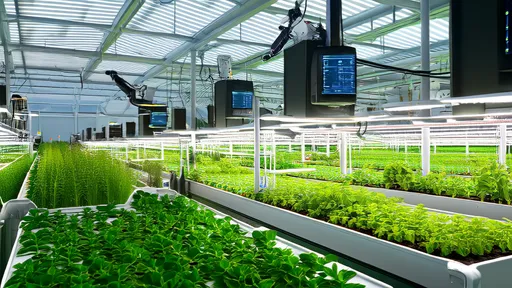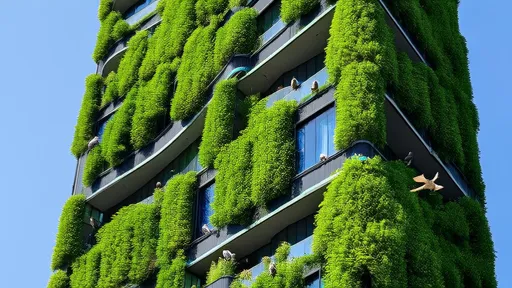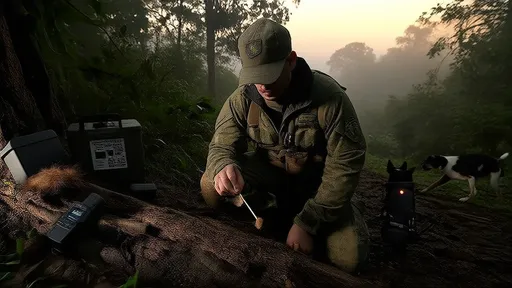The concept of urban ecological bridges has taken root in cities worldwide, offering a revolutionary approach to biodiversity conservation. Among the most striking innovations in this field are vertical forests—architectural marvels that integrate lush vegetation into high-rise buildings. These structures are not merely aesthetic enhancements; they serve as vital corridors for species revival in densely populated urban areas. As concrete jungles expand, vertical forests emerge as sanctuaries where flora and fauna can thrive, reconnecting fragmented ecosystems and fostering a harmonious coexistence between humans and nature.
Vertical forests, pioneered by architects like Stefano Boeri, have transformed skylines from Milan to Nanjing. These buildings are designed to host thousands of plants, shrubs, and trees, creating microhabitats for birds, insects, and even small mammals. The layered vegetation mimics natural forests, providing food, shelter, and breeding grounds for species displaced by urbanization. Researchers have documented the return of pollinators like bees and butterflies to areas where vertical forests dominate, signaling a promising shift in urban ecological health. The ripple effects of these green towers extend beyond their immediate surroundings, influencing local climate regulation and air quality.
The success of vertical forests hinges on meticulous planning and species selection. Architects collaborate with botanists and ecologists to choose plants that are resilient to urban conditions while supporting local wildlife. Native species are prioritized to ensure ecological compatibility, while the structural integrity of the building remains uncompromised. For instance, the Bosco Verticale in Milan features over 900 trees and 20,000 plants, representing a carefully curated mix that sustains biodiversity year-round. This synergy between design and ecology underscores the potential of vertical forests to act as urban arks, safeguarding species that might otherwise vanish from cityscapes.
Critics argue that vertical forests are costly and labor-intensive, requiring significant maintenance to sustain their greenery. However, proponents counter that the long-term benefits—such as reduced urban heat island effects, carbon sequestration, and enhanced mental well-being for residents—far outweigh the initial investments. Moreover, the symbolic value of these structures cannot be overlooked. They challenge the traditional dichotomy between urban development and environmental preservation, proving that cities can be both thriving economic hubs and thriving ecosystems. As more municipalities adopt this model, vertical forests could become a cornerstone of sustainable urban planning.
Beyond their ecological contributions, vertical forests inspire a cultural shift in how we perceive urban living. They embody the idea that cities need not be devoid of nature but can instead be redesigned to embrace it. Educational programs and public engagement initiatives often accompany these projects, fostering a sense of stewardship among residents. In cities like Singapore and Paris, vertical forests have become landmarks that attract tourists and researchers alike, further amplifying their impact. The growing body of research on their benefits continues to fuel interest and investment, suggesting that this trend is far from fleeting.
The future of vertical forests may lie in their scalability and adaptability. Innovations in modular design and hydroponic systems could make these structures more accessible to cities with limited resources. Some envision a network of vertical forests forming interconnected green corridors across megacities, enabling species to migrate and genetic diversity to flourish. As climate change intensifies, the role of these ecological bridges will only grow in importance. They represent a bold reimagining of urban spaces—one where skyscrapers are not just monuments to human ingenuity but also lifelines for the planet’s biodiversity.
Ultimately, the rise of vertical forests signals a paradigm shift in urban ecology. No longer confined to parks and reserves, nature is reclaiming its place in the heart of cities, one building at a time. While challenges remain, the potential for species revival and ecological restoration is undeniable. As architects, scientists, and policymakers continue to refine this model, vertical forests could pave the way for a new era of sustainable urbanization—where the boundaries between the built environment and the natural world blur, giving rise to cities that breathe, grow, and teem with life.

By /Jul 14, 2025

By /Jul 14, 2025

By /Jul 14, 2025

By /Jul 14, 2025

By /Jul 14, 2025

By /Jul 14, 2025

By /Jul 14, 2025

By /Jul 14, 2025

By /Jul 14, 2025

By /Jul 14, 2025

By /Jul 14, 2025

By /Jul 14, 2025

By /Jul 14, 2025

By /Jul 14, 2025

By /Jul 14, 2025

By /Jul 14, 2025

By /Jul 14, 2025

By /Jul 14, 2025